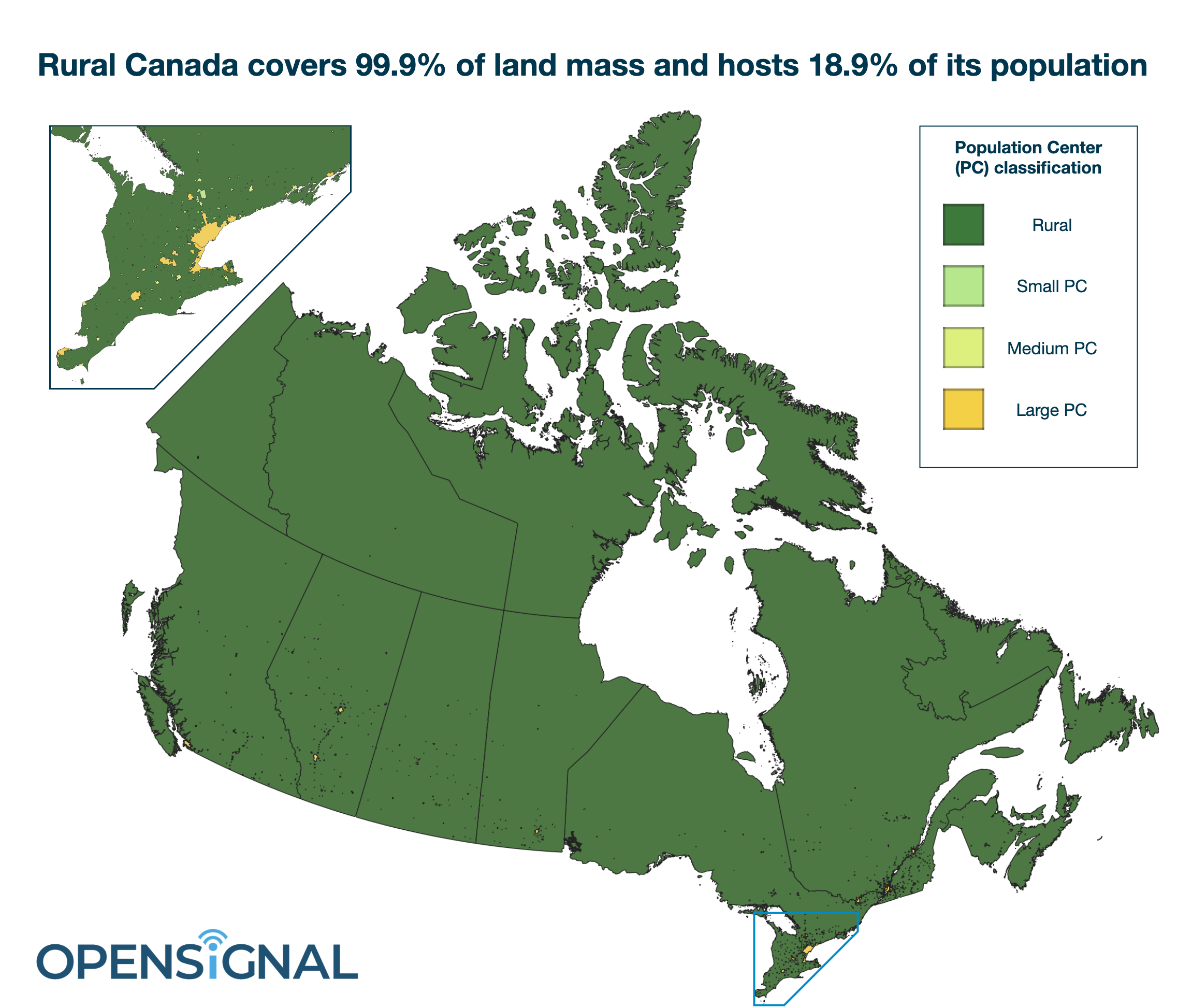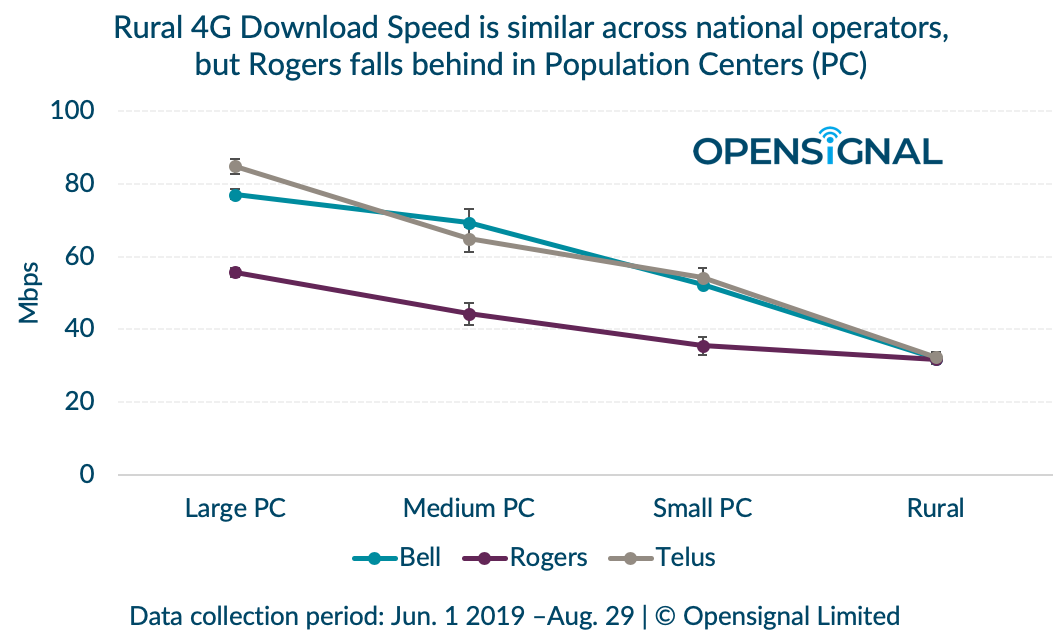For the second largest country in the world by land mass, mobile experience in rural areas is a hot topic, particularly when considering the high relative prices that rural Canadians pay for communication services compared to urban Canadians. According to the Canadian Radio-television and Telecommunications Commission (CRTC), “On a national basis, average combined prices in rural communities were 5% higher than in urban centres.” The issue of high costs urged Prime Minister Justin Trudeau to pledge cutting the cost of mobile service by as much as 25%, as well as encouraging more competition from smaller operators.
With close to 20% of the population located in rural areas, Opensignal analyzed the mobile network experience of users when compared to urban network experience within Canada as well as globally. Results showed Canadians do get what they pay for – speeds and availability which exceed or rival the overall figures of developed countries.

We classified Canada’s territory using the national statistics office’ definition of Population Center (PC), which also defines all areas outside population centers as rural areas. Statistics Canada categorises population centers of three types — small (between 1,000 and 29,999 inhabitants), medium (up to 99,999 inhabitants) and large (with 100,000 or more people).

Opensignal users in Canada's rural areas experience considerable lower 4G Download Speed than our users in large urban areas across all three national operators. Our users achieved an average 4G Download Speed up to 2.6 times faster in large urban zones compared to the same operator’s user experience measured in rural areas. Even our users on Rogers, the slowest operator of the three, experienced 1.75 times their rural speed in large urban areas. Despite this, Canada’s slower rural speed still outperforms the average speeds of many countries in the world including the USA.
We found that experience in rural areas was virtually identical across the three national operators. However, in urban regions we saw that our users’ experience when connecting on Rogers' network was notably slower than that of our users on Bell and Telus. In large urban areas, our Telus users achieved the highest speed of approximately 85 Mbps, breaking away from the tie with Bell which held true for smaller area types.

Looking at 4G Availability, we see that users in rural areas spend 80.8% of time connected to 4G averaged across the three operators, compared to 93.6% in large urban areas. In contrast to what we have seen for download speed, the 4G Availability of Rogers’ users was significantly lower than for our Bell and Telus users in rural Canada. However, the difference in time spent on 4G between our users on Rogers and those on its competitors gets narrower as we look at higher population areas. Telus and Bell offer very similar 4G Availability across area types.
Canada is ahead of the international curve for rural 4G
Compared to other countries, Canada has remarkably high 4G Availability in its expansive rural territories. In a previous report we looked at 4G Availability in rural Germany and found that our users with a 4G device and subscription were able to get a 4G connection on average 73.5% of the time, ranging from 77.3% to as low as 66.7% in different rural districts.
In our recent US report, we found that our US users’ 4G Availability in remote rural areas was below 80% for all operators except Verizon. By contrast, users in rural Canada were able to connect to 4G on average 80.8% of the time and – with an average 4G Download Experience of 32 Mbps – can download much faster than the average US user.
Canada often ranks highly for mobile network experience on Opensignal’s international benchmarks. For example, Canada ranked third after South Korea and Norway in Download Speed Experience in our May report on the State of Mobile Experience.
Despite our Canadian users experiencing large differences in 4G Download Speed across rural and urban areas, our rural users on average had a faster 4G connection than what our users experienced on average in 76 countries. If rural Canada were a country, it would rank 12th in our Download Speed Experience ranking, with our rural Canadian users on average seeing faster 4G download speeds than our users in Sweden, New Zealand, France, and 73 of the other countries we reported on.
Our analysis shows that Canada offers users among the fastest and most accessible 4G networks across its vast rural landscape.
Opensignal Limited retains ownership of this insight including all intellectual property rights, data, content, graphs & analysis. Reports and insights produced by Opensignal Limited may not be quoted, reproduced, distributed, published for any commercial purpose (including use in advertisements or other promotional content) without prior written consent. Journalists are encouraged to quote information included in Opensignal reports and insights provided they include clear source attribution. For more information, contact [email protected].
